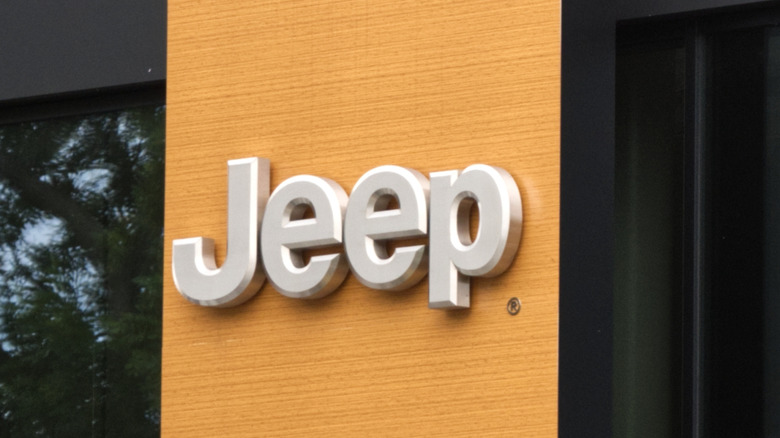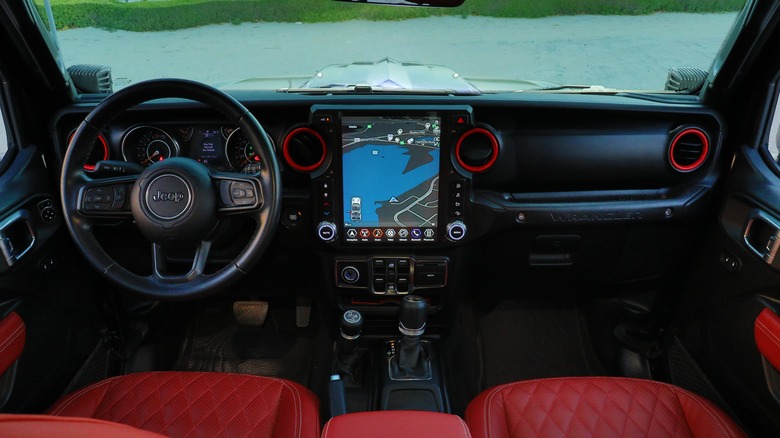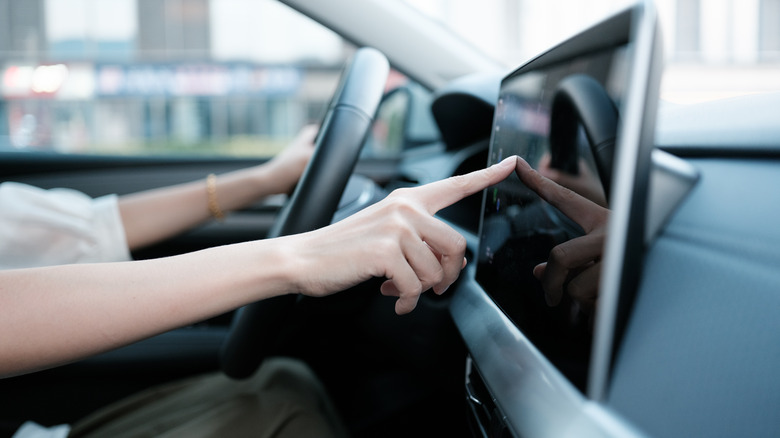Is Jeep Really Inundating Drivers With Full-Screen Pop-Up Ads Every Time They Stop Their Vehicle?
Jeep is a brand with a long and storied history, who didn't forget where it came from. From Jeep models containing Easter eggs connected to the company's history to many of its vehicles maintaining the same decades-old aesthetic hallmarks, it's clearly connected to its past. At the same time, as the automotive landscape has evolved and vehicles have taken on new features and innovations, Jeep has made an effort to keep up with the times. Its models have kept things up-to-date under the hood, in addition to souping up the cabin. One of the biggest changes to come from Jeep in recent years is the inclusion of a digital touchscreen interface on many of its vehicles.
Replacing several buttons, knobs, and the like, this display conveniently handles everything from navigation to music and even Wi-Fi if it's available. While this may sound like a huge step in the right direction, it isn't without drawbacks. A major one that has come to light is the advent of pop-up advertising every time their vehicle came to a stop, which many drivers reported started in the form of an ad for an extended warranty from Jeep itself, ironically urging them to "Purchase Peace of Mind." Worse yet, closing it by tapping the X in the top corner only gets rid of it for a time. Once the car stops again, it returns.
Sadly, this whole situation isn't an unsubstantiated rumor or internet prank– though Jeep's parent company, Stellantis, claims it's nothing to worry about.
According to Stellantis, this is a mere glitch
A pop-up advertisement appearing on a Jeep touchscreen interface every time the vehicle stops sounds terrible. Not only is it annoying getting the same ad every time the brakes are applied, but it's a distraction. Having to see it and try pressing the X button to make it go away isn't far off from using a phone while driving, which is illegal in over half the States. Thus, Stellantis — the owner of numerous car brands as of 2025 — heard the backlash to this seemingly intentional nuisance and shed some light on the situation. Speaking to Fortune, a spokesperson for Jeep's parent company explained that this is a software glitch, nothing more.
"A temporary software glitch affected the ability to instantly opt out in a few isolated cases, though instant opt-out is the standard for all our in-vehicle messages. Our team had already identified and corrected the error, and we are following up directly with the customer," read the company's response. Stellantis said this in February 2025, and while this could be true and the issue remains unresolved, one has to wonder if it's as much of a glitch as it might seem. After all, reports of dashboard advertising go back years before this.
As it turns out, other automakers are exploring in-vehicle advertising. That's not to say Jeep and Stellantis are actively pursuing it, but it's clear there's a push within the automotive industry for it all the same.
Is in-car advertising part of the future of driving?
In the modern world, no matter where you look, you'll find advertisements. Billboards, TV commercials, ads on your phone, and more are all urging you to buy, buy, and buy some more. Advertising in cars is not a novel concept, with radio stations running ads of all kinds for decades. Some retro ads for cars were even quite charming. However, with the inclusion of massive screens in Jeep vehicles and along with other brands, coupled with internet connectivity becoming standard in most rides, we could be entering a new, obnoxious era of in-car marketing. If we go down this path, many might wish all they had to contend with was a Jeep warranty offer every time they stop.
In September 2024, Kelley Blue Book reported that Ford had filed a patent pertaining to in-car advertising. The tech was described as audio advertising to drivers and passengers through the GPS system, recommending stores and services along the route. Ford specified that recommendations are only intended to come through around every 10 minutes, but there is a caveat to this. Should user data indicate that the tech has been received positively, this could increase to every five minutes. Adding yet another dystopian layer to this story, Ford would also have the ability to listen in on your in-car conversations and track your drives to dial-in its marketing.
One can only hope that Jeep's pop-up ads are truly glitches and not a sign of things to come. With Ford's push for in-car advertising, though, there's a chance the daily commute could get a lot more irritating in the coming years.


